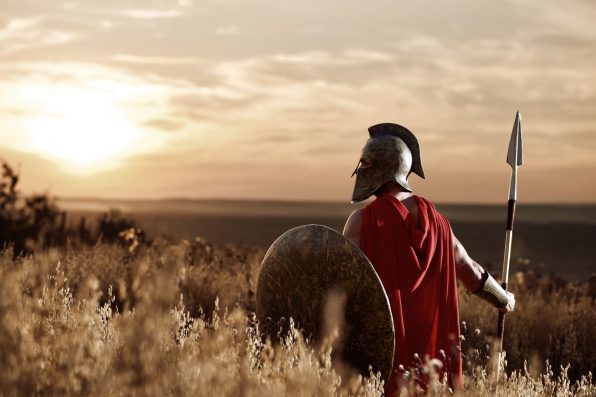While Gladiator Fights Are Considered Quintessentially Roman By Nature And Began As A Way To Honor The Dead, These Spectacles Didn’t Actually Originate In Rome

The practice of having gladiators fight to the death in an amphitheater where enthusiastic crowds gather to watch is an ancient one.
Such a spectacle has always been considered quintessentially Roman by nature. But surprisingly, gladiator fights did not actually originate in Rome.
The tradition started in Rome in 264 B.C. after the death of Brutus Pera, an important member of one of the most powerful families in the early Roman Republic.
His sons wanted to commemorate him by hosting a munus, which was a public wake with a feast of meats and wines.
However, his sons also wanted to include an event that would make the munus memorable, such as a fight to the death. Thus began a centuries-long custom of brutal, bloody battles between gladiators in the city of Rome.
According to the Roman author Ausonius, the fight in honor of Brutus Pera involved six slaves pummeling away at each other with the weapons and armor of the Thracians, a people who lived in the region that is now Bulgaria.
It’s unclear how the battle went, but it is likely that the six gladiators fought until only one was left alive.
Once blood had been spilled and the meat and wine were passed around, the soul of Brutus Pera could finally make its way to the afterlife.
In the ancient world, gladiator fights were commonly regarded as a type of human sacrifice to honor the dead at their funerals.

serhiibobyk – stock.adobe.com – illustrative purposes only, not the actual person
Around a century before the death of Brutus Pera, the Campanians on the Italian Peninsula held gladiator fights, although they were not necessarily associated with funerals.
The Campanians were descendants of Greek settlers, and it is said that they started the tradition as a way to celebrate their military victory over the Samnites. They dressed slaves in Samnite armor and forced them to fight to the death.
Some scholars believe that the origins of gladiator fights can be traced more north to the ancient Etruscan civilization.
But, the earliest known evidence of gladiatorial combat linked to funerals is from paintings in Campanian tombs that date as far back as the fourth century B.C.
Throughout the last centuries B.C. in Rome, the number of gladiator fights at funerals increased steadily.
Eventually, they became proper events with audiences seated in wooden stands. The contests came to include over a hundred gladiators and could last for days.
The gladiators themselves also experienced a change. In the beginning, they were slaves who were given simple weapons and zero training. But as the tradition evolved, gladiators were provided with armor and had skills in battle.
By the first century B.C., the munus had become a political tool used to win the favor of the people. Roman dignitaries would stage grand gladiatorial spectacles under the guise of funerary rites to gain popularity. For nearly 700 years, the sport of gladiator fighting continued to be a fixture in Roman civilization.
Sign up for Chip Chick’s newsletter and get stories like this delivered to your inbox.
More About:News